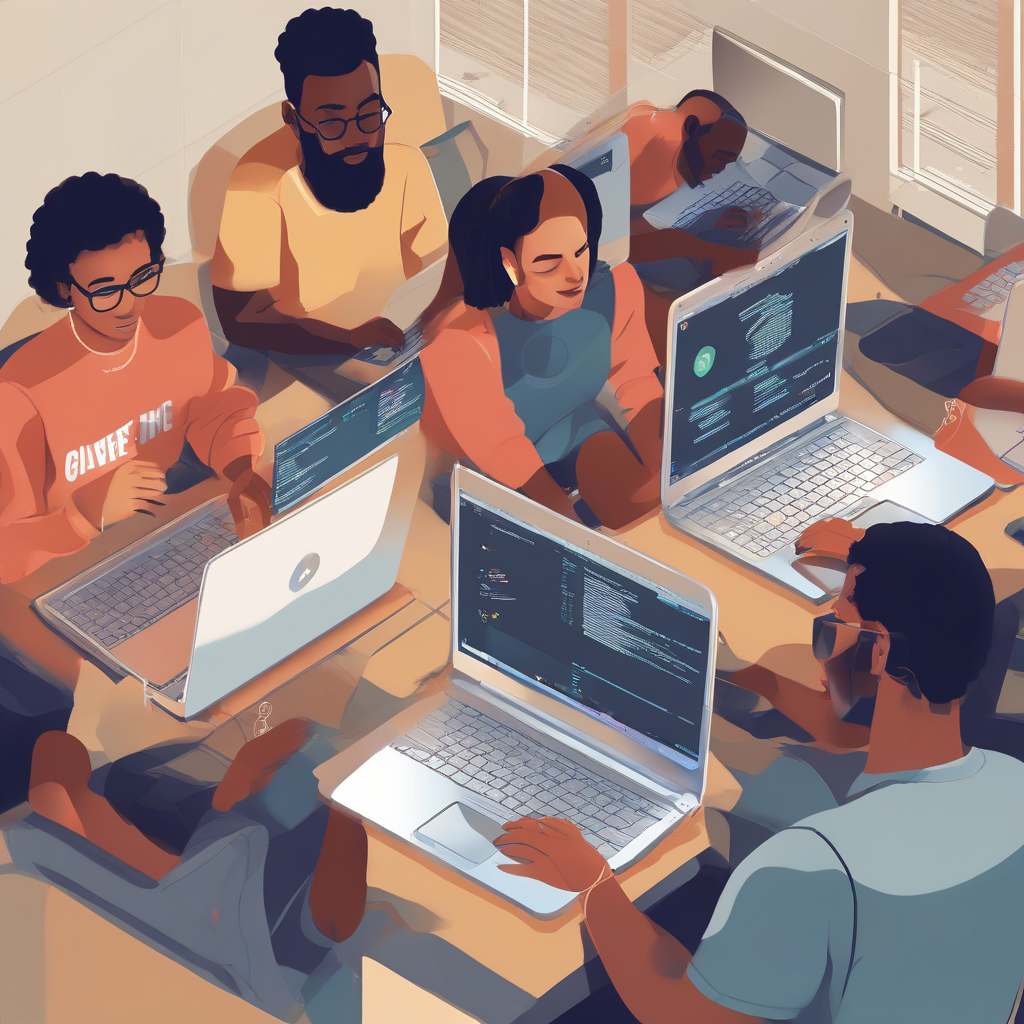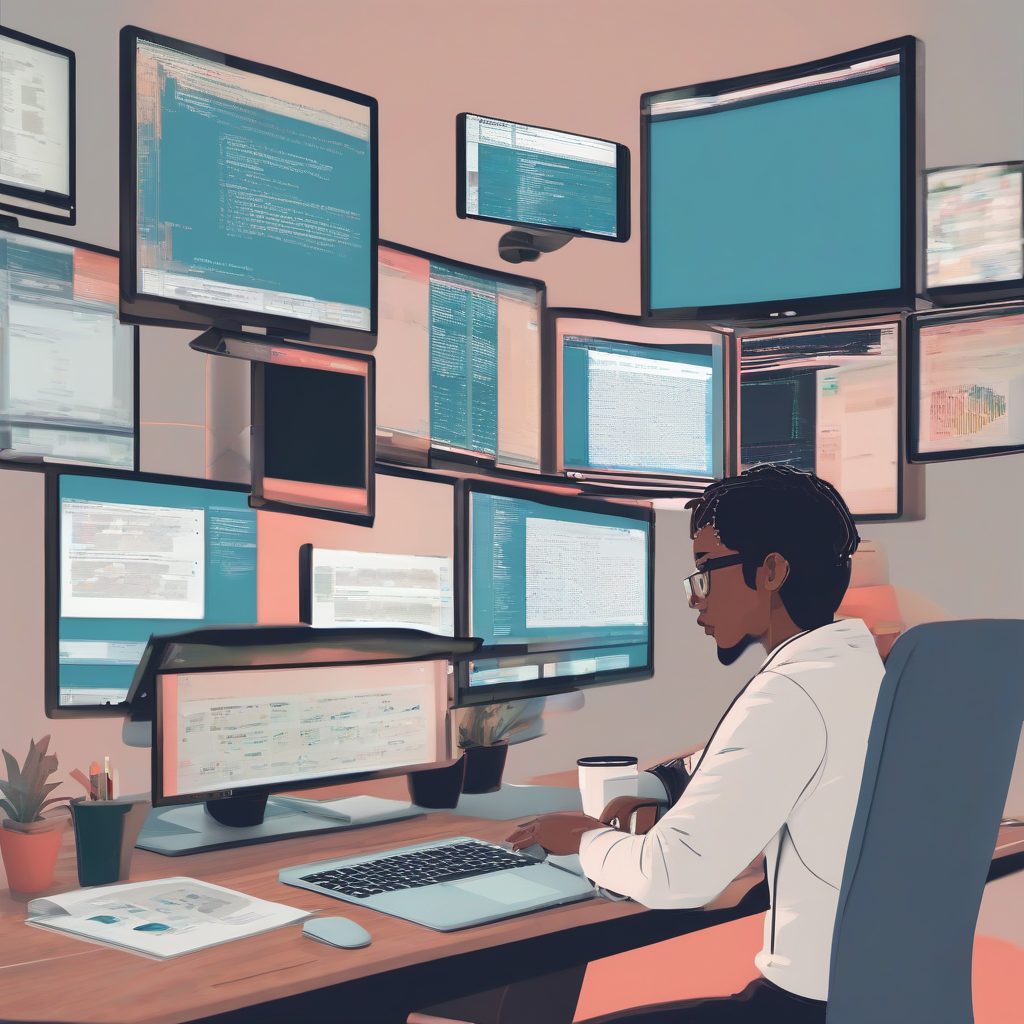Getting Started With Coding
Coding is the process of creating instructions for a computer to follow. These instructions are written in a programming language, which is a set of rules and symbols that the computer can understand. Coding is used to create everything from websites and apps to operating systems and video games. It's a powerful tool that can be used to solve problems, automate tasks, and create new and innovative things. This post will serve as a comprehensive introduction to the world of coding, exploring its fundamentals, common languages, and the steps you can take to begin your coding journey.
Why Learn to Code?
In today's increasingly digital world, coding skills are becoming increasingly valuable. The demand for skilled programmers and software developers is consistently high, offering numerous career opportunities across various industries. But the benefits of learning to code extend far beyond career prospects. Coding fosters critical thinking, problem-solving, and logical reasoning skills – abilities transferable to various aspects of life.
Learning to code empowers you to:
- Build things: Turn your ideas into reality by creating websites, apps, games, and more.
- Automate tasks: Reduce repetitive work by writing scripts and programs.
- Solve problems: Break down complex issues into smaller, manageable parts and find efficient solutions.
- Understand technology: Gain a deeper understanding of how technology works and how it impacts our world.
- Boost your career prospects: Increase your marketability and open doors to exciting job opportunities.

Choosing Your First Programming Language
The sheer number of programming languages can feel overwhelming for beginners. However, some are more beginner-friendly than others. The best choice depends on your goals and interests, but here are a few popular options:
Python: Known for its readability and ease of use, Python is a versatile language suitable for web development, data science, machine learning, and more. Its extensive libraries and supportive community make it an excellent choice for beginners.
JavaScript: Essential for web development, JavaScript enables interactive elements and dynamic functionality on websites. It's a client-side language, meaning it runs directly in the user's web browser.
HTML & CSS: Although not strictly programming languages, HTML (HyperText Markup Language) and CSS (Cascading Style Sheets) are fundamental for web development. HTML structures the content of a webpage, while CSS styles its appearance. Learning these is a great starting point for aspiring web developers.
Java: A robust and widely used language, Java is platform-independent, meaning code written in Java can run on various operating systems. It's commonly used for enterprise applications, Android app development, and more.
C#: Developed by Microsoft, C# is used extensively for Windows application development, game development using Unity, and web development with ASP.NET.
It's not necessary to master every language. Starting with one and gradually expanding your knowledge as you progress is a more effective approach. Focus on understanding the fundamental programming concepts, and the transition to other languages will be smoother.
Fundamental Programming Concepts
Irrespective of the chosen language, several fundamental concepts underpin all programming:
- Variables: Containers that store data, such as numbers, text, or booleans (true/false).
- Data Types: Categorization of data, including integers, floats (decimal numbers), strings (text), and booleans.
- Operators: Symbols that perform operations on data, such as addition (+), subtraction (-), multiplication (*), and division (/).
- Control Flow: The order in which instructions are executed, often involving conditional statements (if-else) and loops (for, while).
- Functions: Reusable blocks of code that perform specific tasks, promoting modularity and code reusability.
- Arrays/Lists: Ordered collections of data elements.
- Objects: In object-oriented programming (OOP), objects represent real-world entities with properties (data) and methods (functions).
Understanding these concepts is crucial to writing effective and efficient code. Many online resources and tutorials offer interactive explanations and exercises to help you grasp these fundamentals.
Learning Resources and Tools
Numerous resources are available for learning to code, catering to various learning styles and preferences:
- Online Courses: Platforms like Codecademy, Coursera, edX, and Udemy offer structured courses on various programming languages and concepts.
- Interactive Tutorials: Websites like Khan Academy and freeCodeCamp provide interactive lessons and exercises.
- Books: Numerous books cater to beginners and experienced programmers, covering various programming languages and topics.
- Documentation: Official language documentation provides in-depth information about syntax, functions, and libraries.
- Online Communities: Forums and communities like Stack Overflow offer support and guidance from experienced programmers.

Setting Up Your Development Environment
Before starting to code, you need to set up a development environment. This involves installing a text editor or IDE (Integrated Development Environment) and potentially a compiler or interpreter, depending on the programming language.
Text Editors: Simple text editors like Notepad++ (Windows), Sublime Text, Atom, or VS Code are suitable for beginners. They provide basic features like syntax highlighting and code completion.
IDEs: IDEs provide more advanced features like debugging, code refactoring, and integrated version control. Popular IDEs include Visual Studio (for C# and other languages), IntelliJ IDEA (for Java), and PyCharm (for Python).
Compilers/Interpreters: Compilers translate the source code into machine-readable instructions before execution, while interpreters execute the code line by line. The choice depends on the programming language.
Practice and Projects
Learning to code requires consistent practice. The more you code, the better you'll become. Start with small projects to build your confidence and gradually tackle more complex ones. Consider working on projects that interest you, as this will make the learning process more engaging and enjoyable. Some ideas include:
Building a simple calculator: A great way to practice basic arithmetic operations and input/output.
Creating a to-do list app: Involves working with lists, user input, and data storage.
Developing a basic website: Learn HTML, CSS, and potentially JavaScript to create a simple webpage.
Building a simple game: Develop a text-based game or a simple graphical game using a game engine like Pygame.
Working on projects allows you to apply the concepts you've learned and identify areas where you need to improve.
Contributing to Open Source Projects
As you gain experience, consider contributing to open-source projects. This is a great way to learn from experienced developers, collaborate on real-world projects, and improve your coding skills. Start with small contributions and gradually take on more challenging tasks.
Staying Updated
The world of coding is constantly evolving, with new languages, frameworks, and tools emerging regularly. Staying updated with the latest trends and technologies is essential to remain competitive and adapt to the changing landscape. Follow industry blogs, attend conferences, and engage with online communities to stay informed.
Learning to code is a rewarding journey that opens doors to countless possibilities. Embrace the challenges, celebrate your successes, and enjoy the process of creating and building. Remember that consistency and persistence are key to mastering coding. With dedication and the right resources, you can transform from a beginner to a confident programmer.